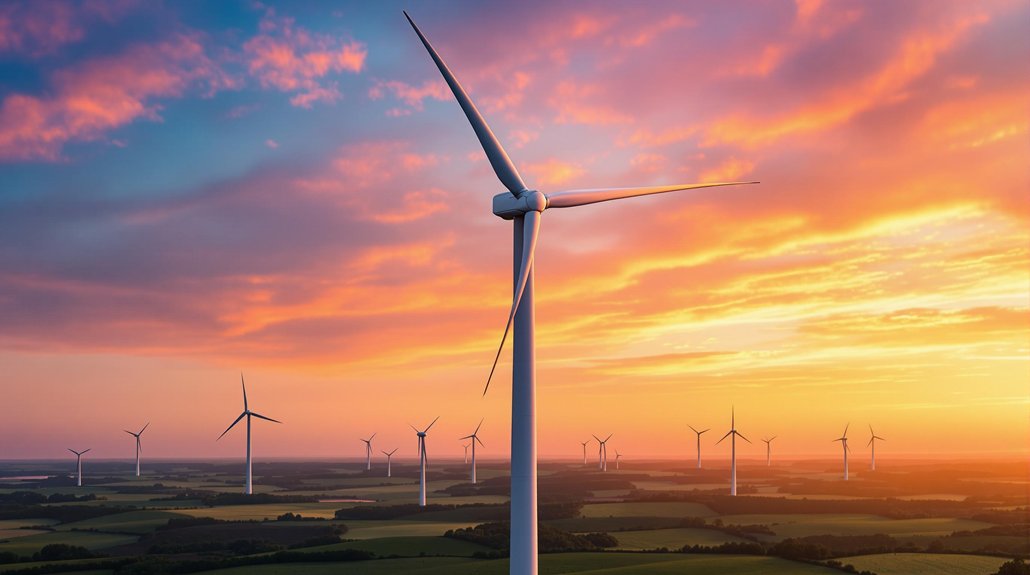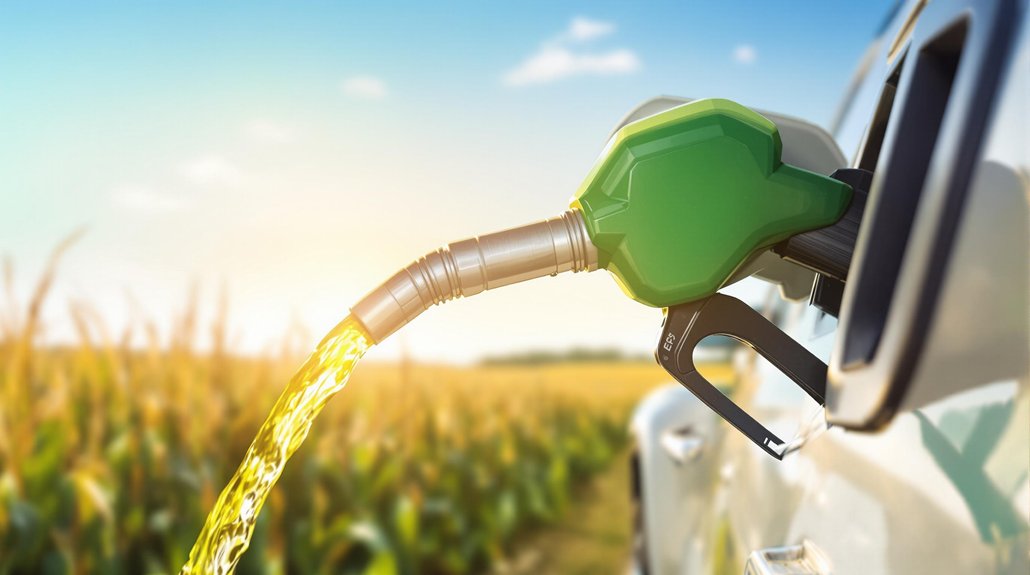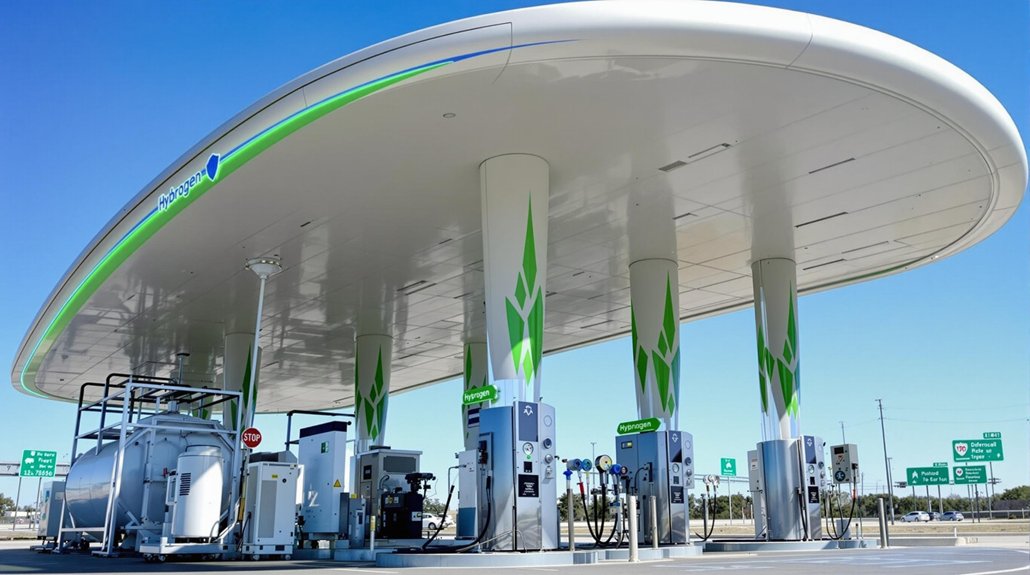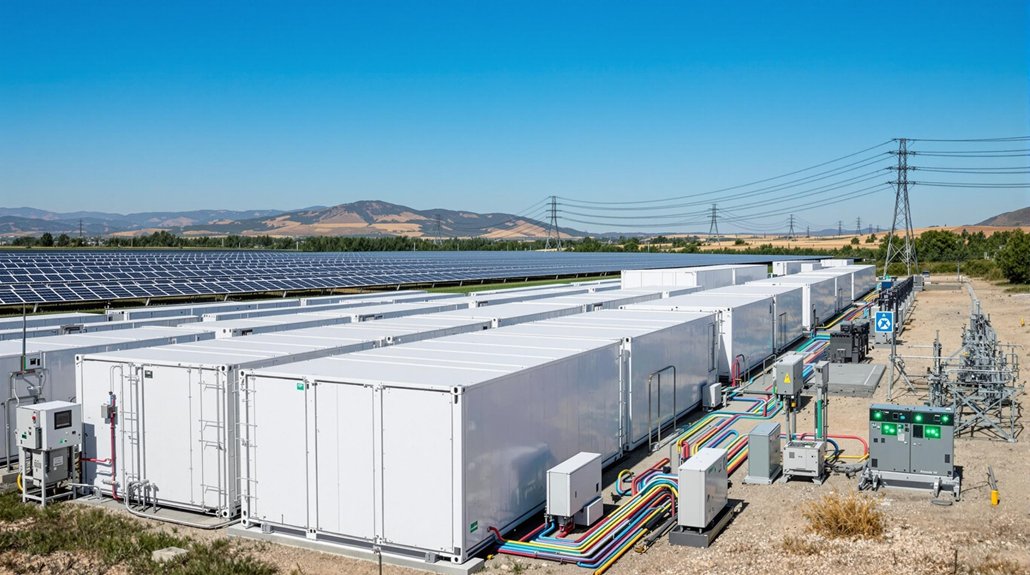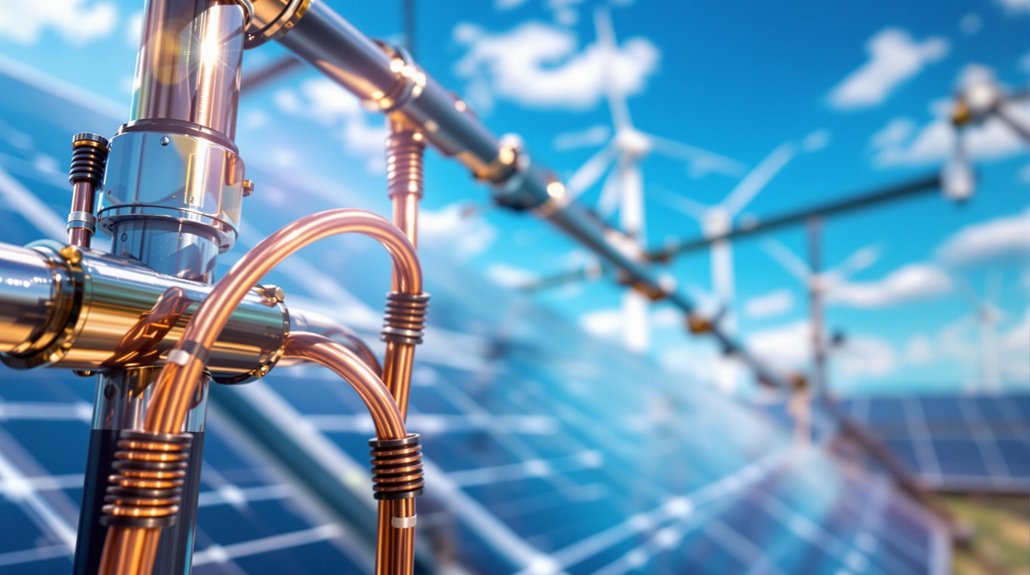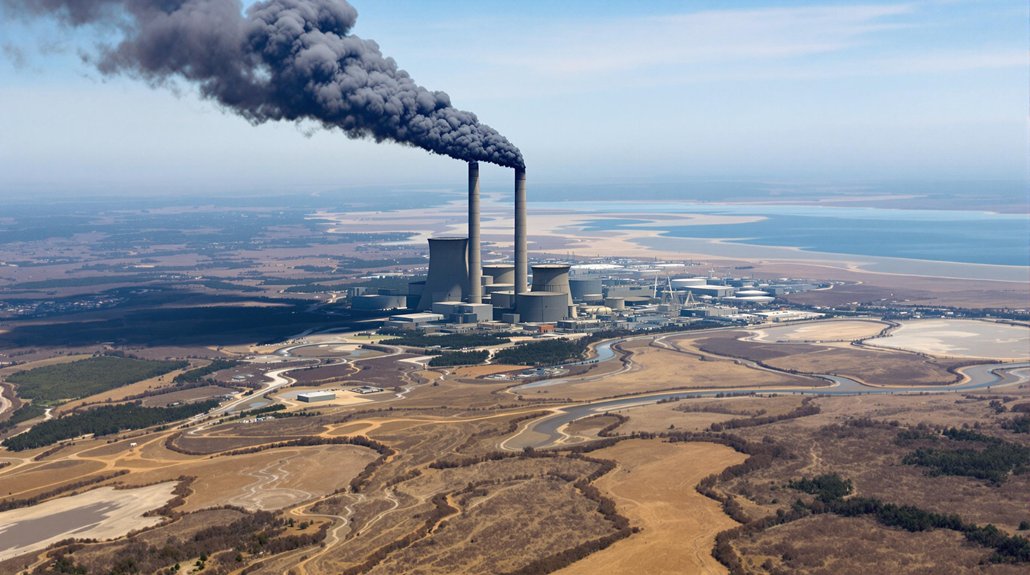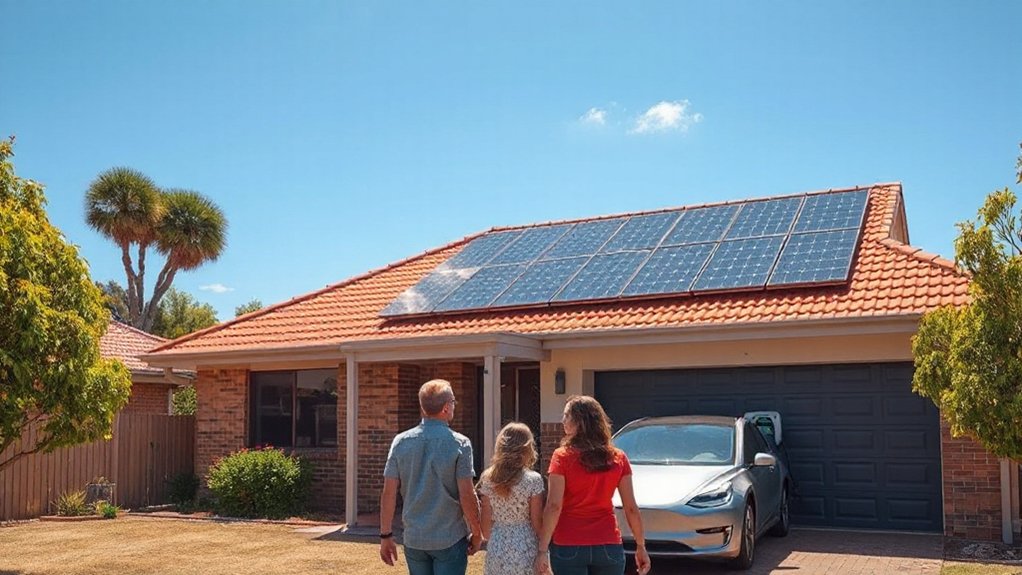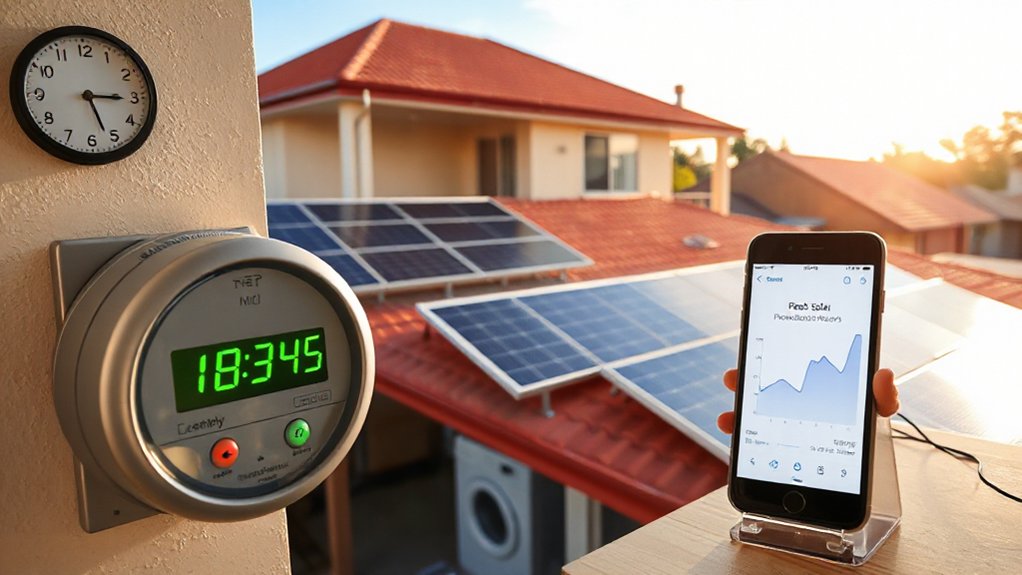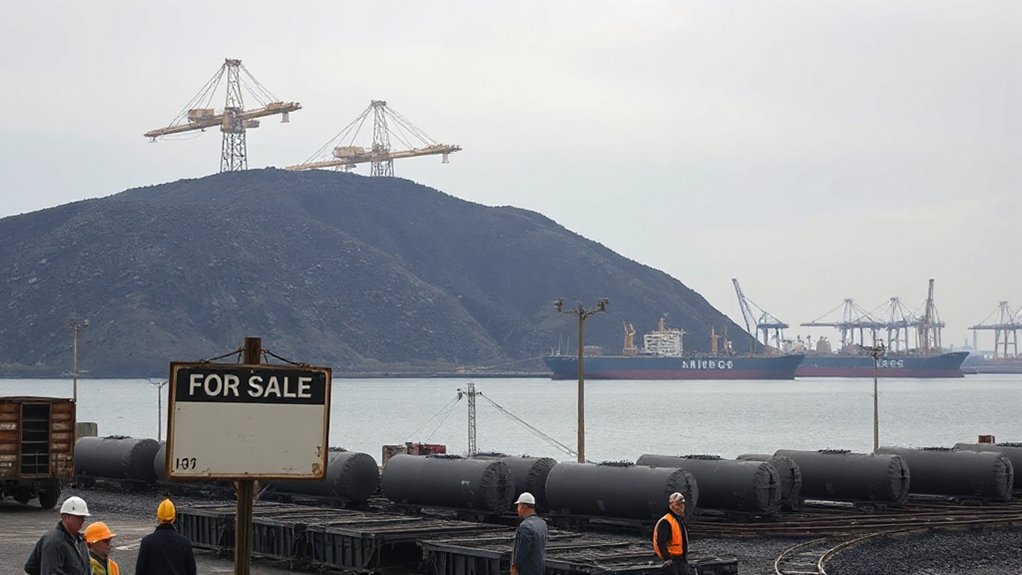Horizontal wind turbines capture clean energy by converting wind into electricity. Large blades mounted on tall towers rotate when pushed by wind, spinning a shaft connected to a generator. Modern turbines can transform up to 50% of wind energy into power, producing between 2-8 megawatts each. They create zero emissions during operation and have become cost-competitive with traditional energy sources. The technology behind these renewable workhorses offers fascinating insights into sustainable power generation.
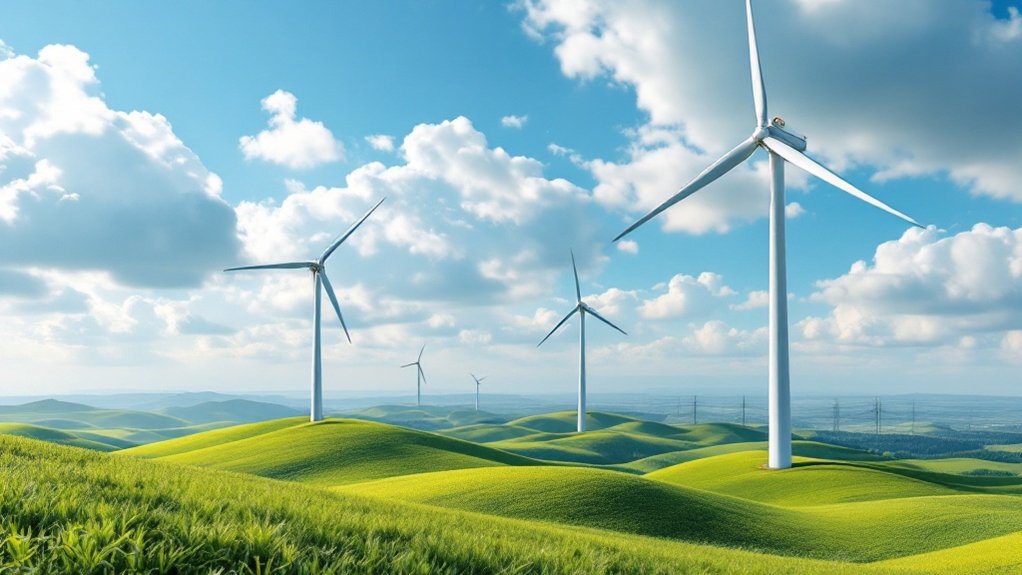
Thousands of horizontal wind turbines now dot landscapes across the globe, transforming gentle breezes into clean electricity. These massive structures feature large blades that rotate perpendicular to the wind on a horizontal shaft. Each turbine sits atop a tall tower, where a component called the nacelle houses the generator and gearbox. A yaw system constantly turns the turbine to face directly into the wind for maximum power production.
Modern horizontal wind turbines convert 40-50% of wind energy into electricity. A single turbine can generate between 2 and 8 megawatts of power, enough for thousands of homes. They work best at wind speeds between 13 and 90 miles per hour. The height of these turbines allows them to capture stronger, more consistent winds that blow at higher altitudes. Their optimized blade design ensures maximum energy capture from prevailing wind conditions. The gearbox plays a critical role by converting the slow rotor speed to the much faster rotation needed by the generator.
These turbines dominate utility-scale wind farms on land and offshore. They’ve become a crucial part of the electrical grid in many countries. The cost of wind energy has fallen dramatically, making it cheaper than many other power sources. Wind farms now produce bulk electricity that feeds directly into transmission systems.
Wind energy creates zero direct emissions while operating. Wind farms prevent millions of tons of carbon dioxide from entering the atmosphere each year. They also use very little water compared to coal, gas, or nuclear plants. Even when accounting for manufacturing and installation, wind energy has a low carbon footprint over its lifetime. This renewable energy source helps preserve natural resources for future generations.
The wind industry creates jobs in manufacturing, installation, and maintenance. Farmers and landowners earn income by leasing their land for turbines while still using most of it for agriculture. Local communities benefit from tax revenue that wind projects generate.
Despite advantages, challenges remain. Turbines require high upfront investment. Wind is intermittent, so backup power or storage is needed. Some people dislike how turbines look on the landscape. Wildlife impacts, particularly on birds and bats, require ongoing study and mitigation efforts.
Frequently Asked Questions
What Noise Levels Do Horizontal Wind Turbines Produce?
Horizontal wind turbines produce noise levels of 35-45 decibels at 300 meters away, similar to a refrigerator humming.
Up close at 40 meters, they’re louder at 50-60 decibels. The noise comes from blades moving through air and mechanical parts.
Modern turbines are quieter than older models. Factors like wind speed affect noise levels.
Engineers use blade design and strategic placement to reduce noise impact on nearby homes.
How Do Wind Turbines Affect Local Wildlife and Bird Populations?
Wind turbines can harm wildlife in several ways. They cause direct deaths when birds and bats collide with blades, killing an estimated 140,000-500,000 birds annually in the U.S.
Turbines also disrupt natural habitats through construction and create barriers that alter migration routes. Some species avoid areas near turbines entirely.
Mitigation efforts include strategic placement away from flight paths, temporary shutdowns during migrations, and new deterrent technologies.
What Is the Payback Period for Installing a Wind Turbine?
Wind turbine payback periods vary widely.
Energy payback takes 6-12 months, while financial payback typically ranges from 7-12 years in the U.S. Some projects recover costs in as little as 4 years, while others take up to 20 years.
Key factors include local wind speed, turbine size, installation costs, electricity prices, and maintenance expenses.
Most modern turbines operate for 16-20 years, producing many times more energy than was used in their manufacturing.
Can Horizontal Wind Turbines Withstand Extreme Weather Conditions?
Horizontal wind turbines are designed to withstand extreme weather conditions. They can handle sustained winds of 112 mph and automatically shut down when wind speeds exceed 55 mph.
The blades can “feather” to reduce wind resistance during storms. Most turbines survive Category 3 hurricanes, and special foundations help them endure in hurricane-prone areas.
Innovations like heated blades prevent icing in cold regions.
How Much Maintenance Do Wind Turbines Require Annually?
Wind turbines require scheduled maintenance 2-3 times yearly, with each visit taking 12-18 hours of downtime.
The annual maintenance cost ranges from $42,000-$48,000 per megawatt. Technicians inspect and lubricate critical components, check connections, and replace fluids as needed.
Modern turbines often use sensors for predictive maintenance, allowing repairs before failures occur. Proper upkeep can extend a turbine’s lifespan to 20-30 years or more.
